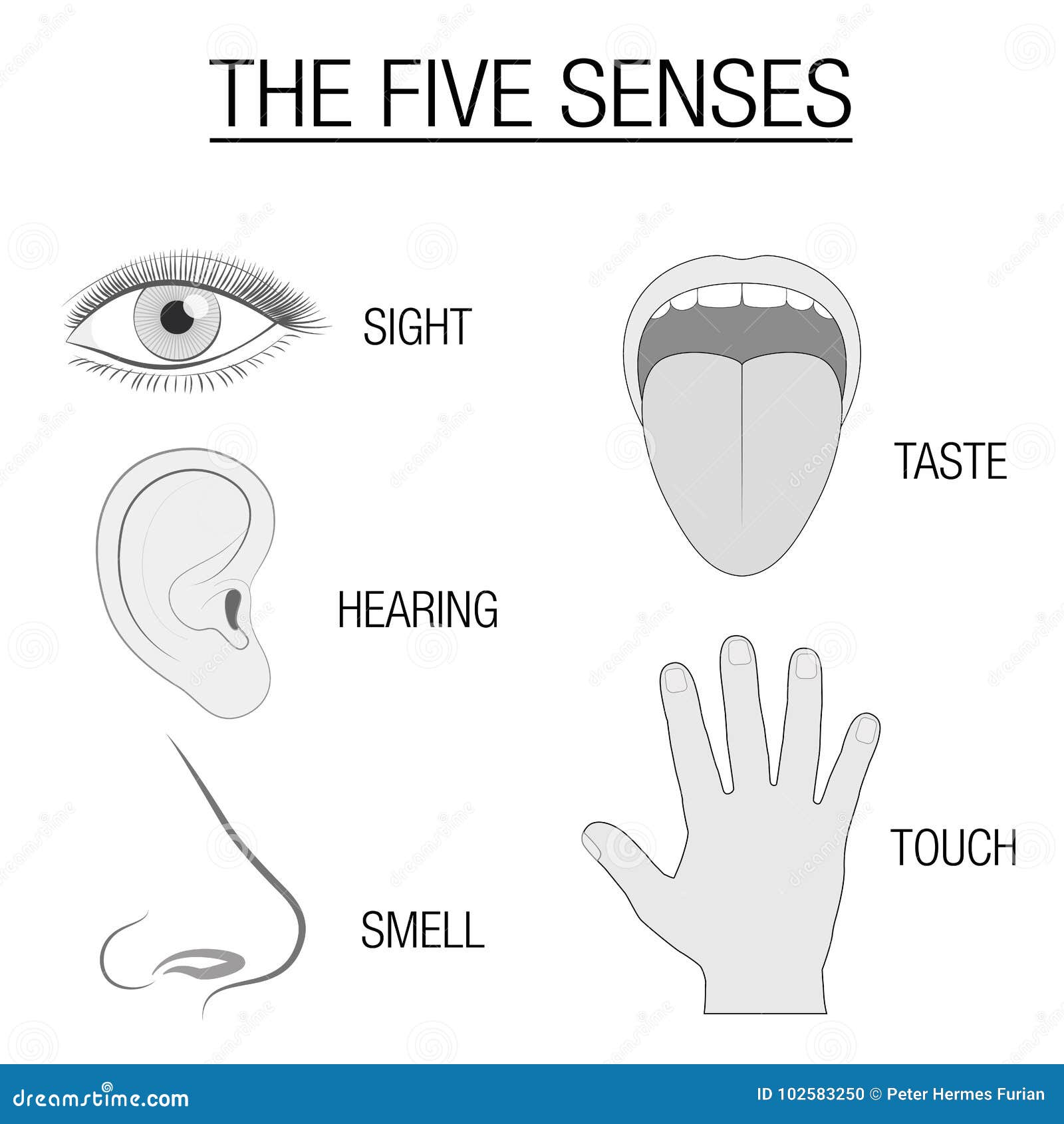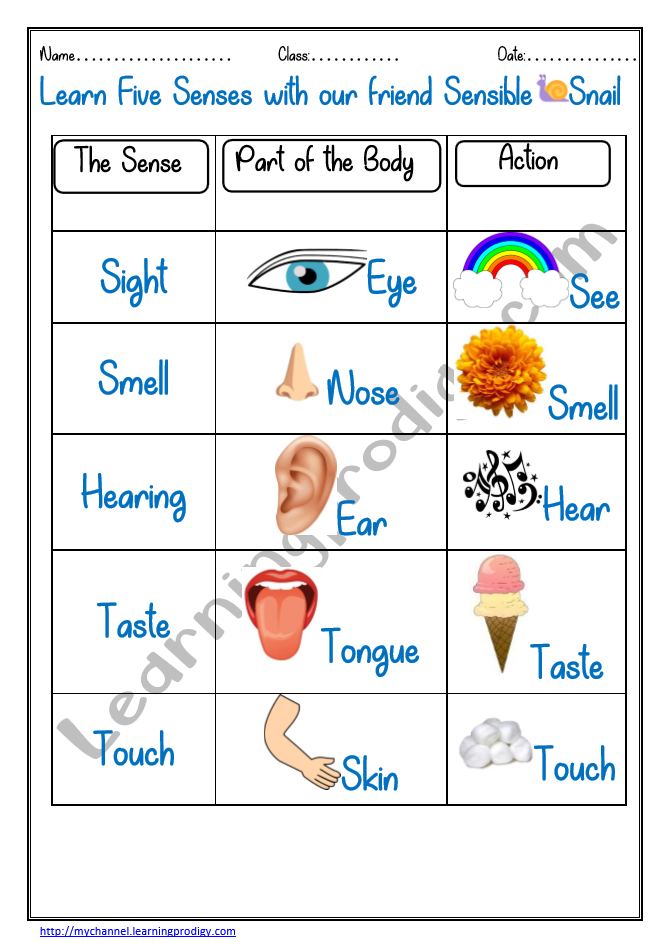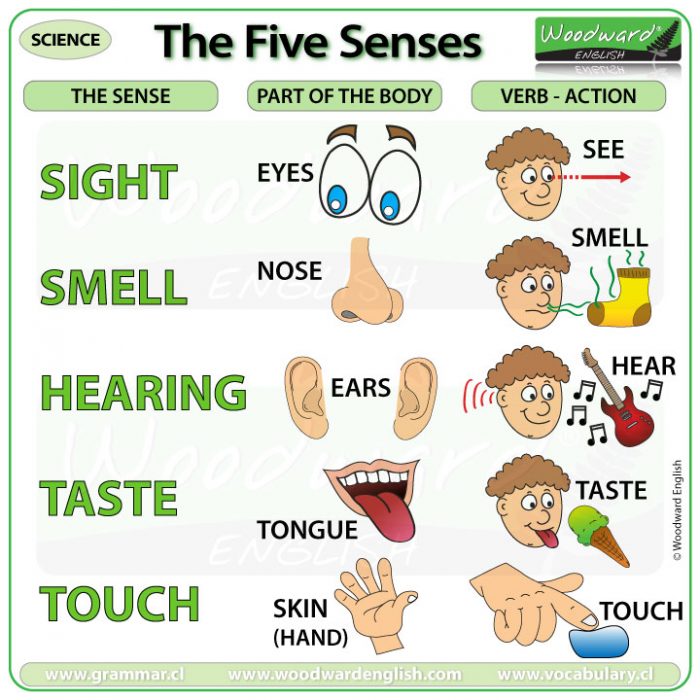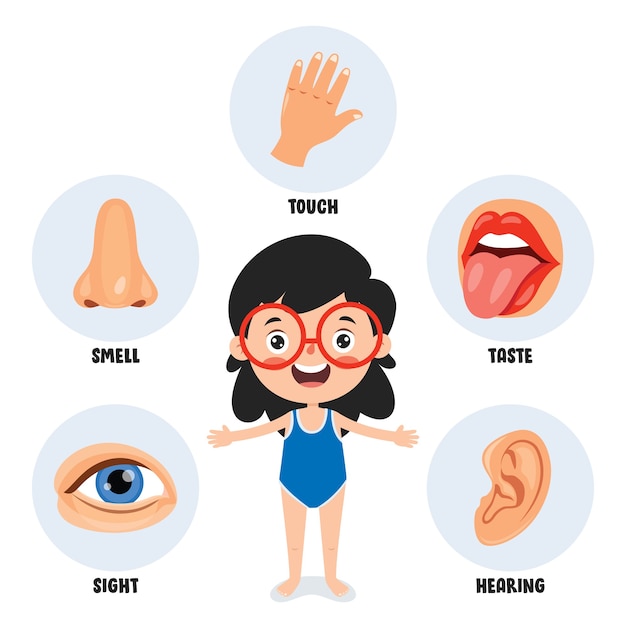
Six sense organs of human body with names Vector Image
The human ear, like that of other mammals, contains sense organs that serve two quite different functions: that of hearing and that of postural equilibrium and coordination of head and eye movements. Anatomically, the ear has three distinguishable parts: the outer, middle, and inner ear.

Five Senses Sensory Organs Chart Stock Vector Illustration of hear, designation 102583250
Sense Organs Organum sensuum Description Traditionally, there are five sense organs that respond to external stimuli and, in turn, relay information to the central nervous system.
INTERACTION THE NERVOUS SYSTEM AND THE SENSE ORGANS
The sensory system has two parts: the general sense and the special sense. The general sense has receptors that are present all over the body, whereas the receptors for the special sense are present in specialized organs. General senses include touch, pressure, position, and pain. Special senses include taste, smell, sight, hearing, and balance.

Muscular System Sense Organs Class 6 to 10th Std CBSE Biology Explorer YouTube
The organs which enable the human body to perceive and respond to the surrounding environment are known as the sense organs of the body. There are mainly five sensory organs in a human body. below is the list of the sense organs' name: Eye (to see) Ear (to hear) Tongue (to taste) Nose (to smell) Skin (to touch).

Sense Organs class 1 YouTube
Humans have five special senses corresponding to specialized sense organs which are responsible for detecting and conveying sensory information to the brain for processing. Special senses include vision, olfaction (smell), audition (hearing), equilibrioception (balance) and gustation (taste). Gustation, one of the five special senses, is the.

Premium Vector Five senses template with human organs Sense organs chart, School activities
Special and General Senses. The human body has two basic types of senses, called special senses and general senses. Special senses have specialized sense organs that gather sensory information and change it into nerve impulses. Special senses include the vision for which the eyes are the specialized sense organs, hearing (ears), balance (ears), taste (tongue), and smell (nasal passages).

LearningProdigy Page 9 of 29 Learning Never Ends
2 The sense organs 3 Touch And Pressure 4 Pain 5 Temperature 6 Awareness Of Limb Position 7 Smell 8 Taste 9 Sight 9.1 Structure of the Eye 9.2 How The Eye Sees 9.3 Colour Vision In Animals 9.4 Binocular Vision 10 Hearing 10.1 Structure of the Ear 10.2 How The Ear Hears 11 Balance 12 Summary 13 Worksheet 14 Test Yourself 15 Websites 16 Glossary

Science chart Parth wadikar Tuljapur. Class 1 st . Sense organs chart, Science chart, Five
GCSE WJEC The nervous system - WJEC Detecting and responding Our nervous system allows us to detect and react to changes in the environment. Sense organs, like the eyes, detect changes and.

Cartoon human senses signs icon set Royalty Free Vector Body Parts For Kids, Body Parts
There are five basic human senses: touch, sight, hearing, smell and taste. The sensing organs associated with each sense send information to the brain to help us understand and perceive the.

Creative of rainy. Sense organs chart....a school work Sense organs chart, Easy math
Exploring Sense Organs: A Visual Chart. To aid in understanding the functions of sense organs, refer to the sense organs chart below: Conclusion. Sense organs are marvels of the human body, providing invaluable abilities to perceive and comprehend the world. Understanding the functions of our sense organs enhances our appreciation for the.

The Five Senses Woodward English
SENSE ORGANS HANDOUT. Sensory Receptors - receive input, generate receptor potentials and with enough summation, generate action potentials in the neurons they are part of or synapse with. 5 Types of Sensory Receptors - based on the type of stimuli they detect: Mechanoreceptors - pressure receptors, stretch receptors, and specialized.

Preparation of a sense organs chart will help understand better about sense organs and their functions. Our Five Sense Organs. As discussed above, our 5 sense organs are capable of receiving and relaying sensory information to the brain. It's necessary for an organism to perceive information with the help of sense organs.

Sense Organs Worksheets
Typical of mammalian structure, the human body shows such characteristics as hair, mammary glands, and highly developed sense organs. Beyond these similarities, however, lie some profound differences. Among the mammals, only humans have a predominantly two-legged posture, a fact that has greatly modified the general mammalian body plan.

Sense organs/Function of the sense organs. YouTube
We have five sense organs, namely: Eyes Ears Nose Tongue Skin These five sense organs contain receptors that relay information through the sensory neurons to the appropriate places within the nervous system. The receptors could be classified into two parts viz. the general and special receptors.

Five Sense Organs Our Five Senses and 5 Sense Organs Sense Organs And Their Functions YouTube
Of course, other materials may be substituted at each station.) Your five senses — seeing, hearing, smelling, tasting, and touching — help you notice the world around you. They're pretty powerful! You use your eyes to see, your ears to hear, your nose to smell, your tongue to taste, and your skin to feel.

Premium Vector Five senses template with human organs
Much of this information comes through the sensory organs: the eyes, ears, nose, tongue, and skin. Specialized cells and tissues within these organs receive raw stimuli and translate them into signals the nervous system can use.